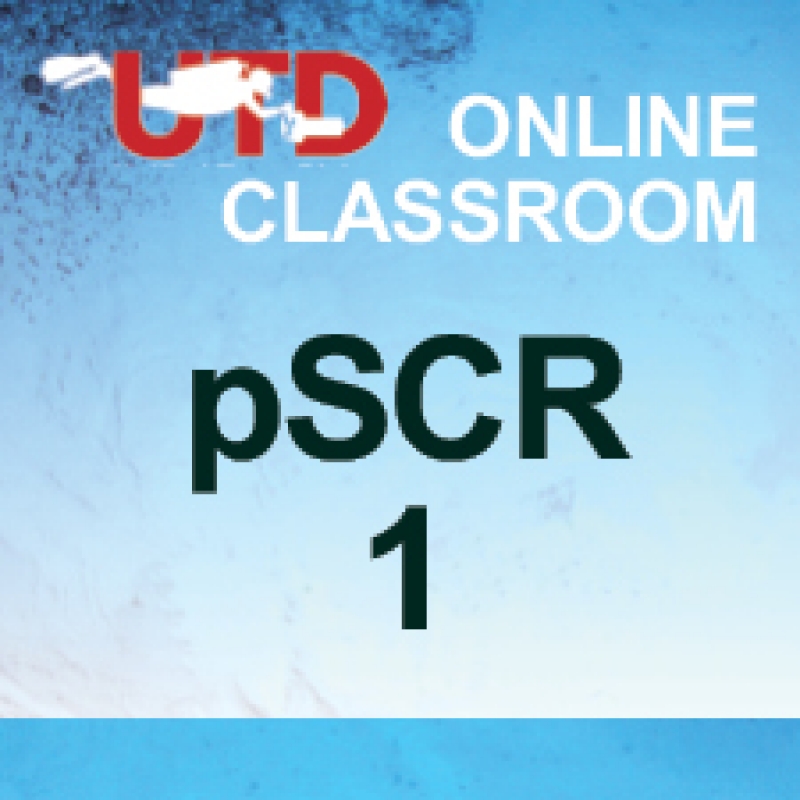The pSCR Rebreather Diver 1 course is designed to educate individuals in basic rebreather technologies, cultivate diver proficiency in the use of PSCR (RB80-style) semi-closed circuit technology, and introduce divers to the use of enriched air. The Rebreather 1 course assumes that individuals are capable divers, but have limited experience in the use of rebreather technology.
Prerequisites
- Must be a minimum age of 21 years of age.
- Must have completed the online UTD rebreather class and test
- Must have UTD Essentials of Tech or equivalent.
- Must have a minimum of 75 dives.
- Must be able to swim a distance of at least 60 feet/18 meters on a breath hold.
- Must be able to swim at least 300 yards/275 meters in less than 12 minutes without stopping.
 Duration
Duration
The Rebreather 1 class is normally conducted over a 5-day period. It involves a minimum of 40 hours of instruction encompassing both classroom and in-water work.
Course Limits
- Student to Instructor ratio is not to exceed 4:1 during any in-water training.
- Maximum depth 100 feet / 30 meters.
Course Content
The UTD Rebreather 1 course is normally conducted over a 5-day period, and cumulatively involves a minimum of 40 hours of instruction designed to provide a working knowledge of rebreather diving, including history, design, function, failures, tables, and operational considerations.
Course requirements include a minimum of ten (10) hours of academics and ten (10) rebreather dives, of which eight (6) are critical skills dives and two (4) are experience open water dives.
Academic Materials and Text
1. Online Classroom Materials – Rebreather
2. Rebreather Planning Sheets
3. Rebreather DVD is recommended
Academic Topics
A. Purpose
B. History
C. Types of Rebreather
D. Common Components of a Rebreather and how they function
E. Inherent Risks of Rebreathers
F. Introduction to the PSCR (RB80-style) Rebreather
G. PSCR (RB80-style) Rebreather Alarms and Warnings
H. The Physics Behind a PSCR (RB80-style) Rebreather
I. Configuration
J. PSCR (RB80-style) DIR Rebreather Physical Design
K. Problem Recognition and Management
L. The Importance of Instinctive Physiological Monitoring
M. Pre-Dive Planning
N. Diving the PSCR (RB80-style) Rebreather
O. Post Dive Procedure
P. Perceived vs. True Work Of Breathing In Rebreather
Q. Need for continuing Education and skill reinforcement
Land Drills and Topics
- Rebreather Function, Failures, Gas sharing, Flow checks
- Air Manifold Failures
- Gas-addition Failures
- Air-sharing
Required Dive Skills & Drills
- Assess and review diving limitations.
- Demonstrate the ability to recognize, evaluate and correct gas interruptions, terminating or continuing the dive as necessary.
- Demonstrate the ability to recognize, evaluate and correct water intrusion, and what to do to remove excess water.
- Demonstrate excellent buoyancy control skills.
- Procedures for gas failures; including valve manipulation, air-sharing, and regulator switching as appropriate.
- Lift bag/surface marker buoy deployment.
- Be able to comfortably demonstrate at least two propulsion techniques that would be appropriate in delicate and/or silty environments.
- Use of touch contact for limited and simulated zero visibility situations.
- Reel and guideline use.
- Air-sharing scenarios to include breath-hold management for air-sharing for at least 200 feet/60 meters
- Demonstrate the efficient deployment of a reserve light in less than 30 seconds.
- Demonstrate excellent buoyancy control skills.
- Demonstrate effective valve-management by switching regulators, shutting down a valve and returning the valve to the open position.
- Demonstrate water tight integrity of the unit by performing a vacuum test
- Demonstrate availability of rebreather supply gas through the use of a flow check.
- Demonstrate the capacity to efficiently supply gas to an out of air diver.
- Demonstrate the ability to efficiently manage gas addition.
Equipment Requirements
- Rebreather: PSCR (RB80-style) semi-closed circuit rebreather
- Tanks/Cylinders: Students are required to use dual tanks/cylinders connected with a dual outlet isolator manifold, which allows for the use of two first stages. The double cylinders must be accessible by both the rebreather and the open circuit regulators. All dives must start with a minimum of 40ft3/1120 liters of gas.
- Regulators: Two first-stages, each supplying a single second stage. One of the second stages must be on a 7 foot/2 meter hose. One of the first stages must supply a pressure gauge and provide inflation for a dry suit (where applicable).
- Buoyancy Compensator: Back-mounted wings, mated with a harness and back plate
- At least one depth-measuring device
- Two timekeeping devices
- Decompression tables
- Mask and fins: fins must be of non-split variety
- At least one cutting device
- Underwater slate or Wet Notes
- One reel/spool, with 100 feet/30 meters of line, per diver
- One primary reel per team, with a minimum of 300 feet/90 meters of line
- Three lights: one primary and two secondary
- Exposure suit appropriate for the duration of exposure
- At least one surface marker buoy per diver



 Duration
Duration